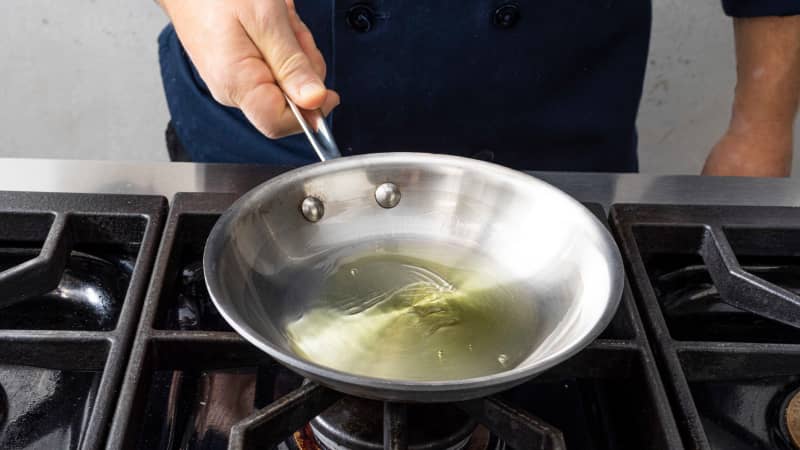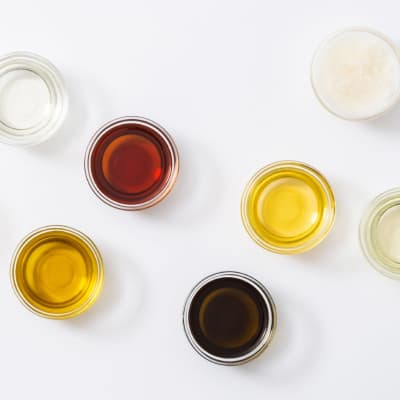The temperature of your oil can make a big difference in the flavor and texture of the food you cook in it. Here’s a guide to the different terms we use when cooking in oil, what temperatures they correspond to, and some visual cues to help you see whether you’ve hit the mark.
Shimmer, Deep-Fry, and Smoke: How Oil Behaves at Different Temperatures
Published Feb. 18, 2021.

Shimmering
Describes oil that has been heated to about 275 degrees. We heat oil to shimmering mostly when shallow-frying cutlets.
Visual Cue: Oil gleams, moves in ripples around the pan

Deep Frying
We generally deep-fry food at a starting temperature between 325 and 375 degrees—we’ve found that these temperatures are best for generating a light, crispy texture. Once the food is added to the oil, the temperature will drop; as the food cooks, the oil should remain somewhere between 250 and 325 degrees (depending on your recipe).
Pro Tip: For the most accurate results, use a clip-on probe thermometer to monitor your oil temperature, adjusting the heat as needed.
Visual Cue: Drop a crustless bread cube or small spoonful of batter into the oil; if it sizzles and fine bubbles appear, your oil is ready.


Smoking
Describes oil that has been heated to its smoking point, which can vary between 350 and 520 degrees. We heat oil to smoking when we want quick, even, and thorough browning while searing a steak or stir-frying. If the oil is below the smoking point when the food is added, browning will take too long and the food will overcook. Don’t worry too much about overheating the oil; as long as you have your food at the ready, there’s little risk since the oil will cool quickly once you add the food. If you have overheated it, you’ll know because the oil will turn dark. In those cases, throw out the oil and start over.
Visual Cue: Multiple wisps of smoke rise from the pan


